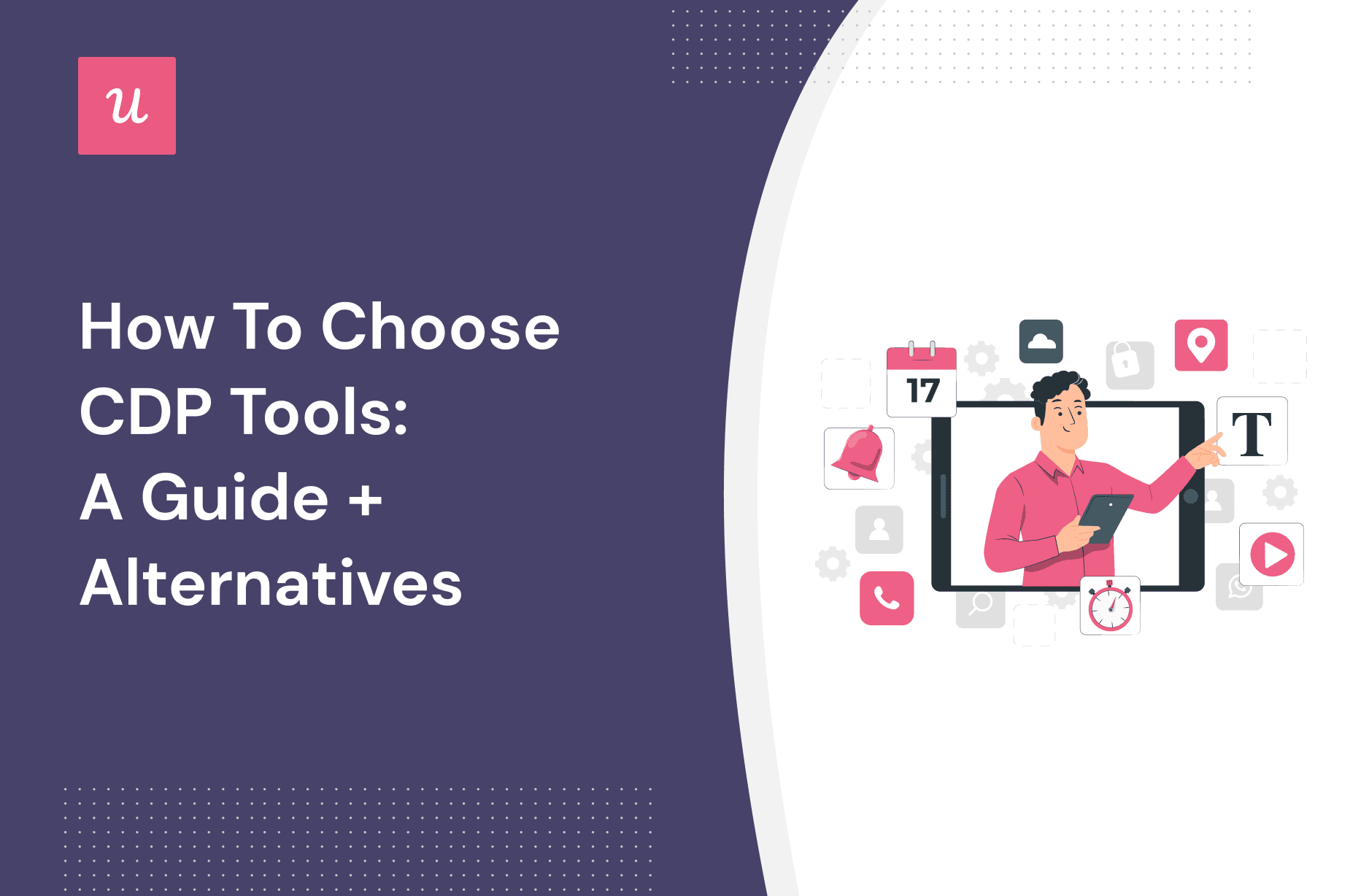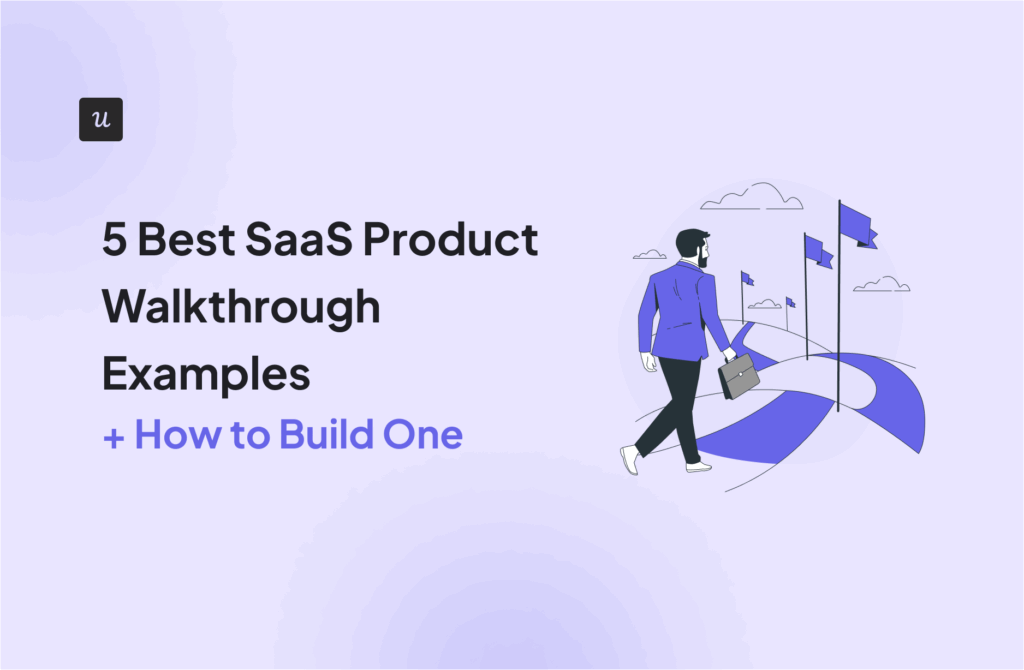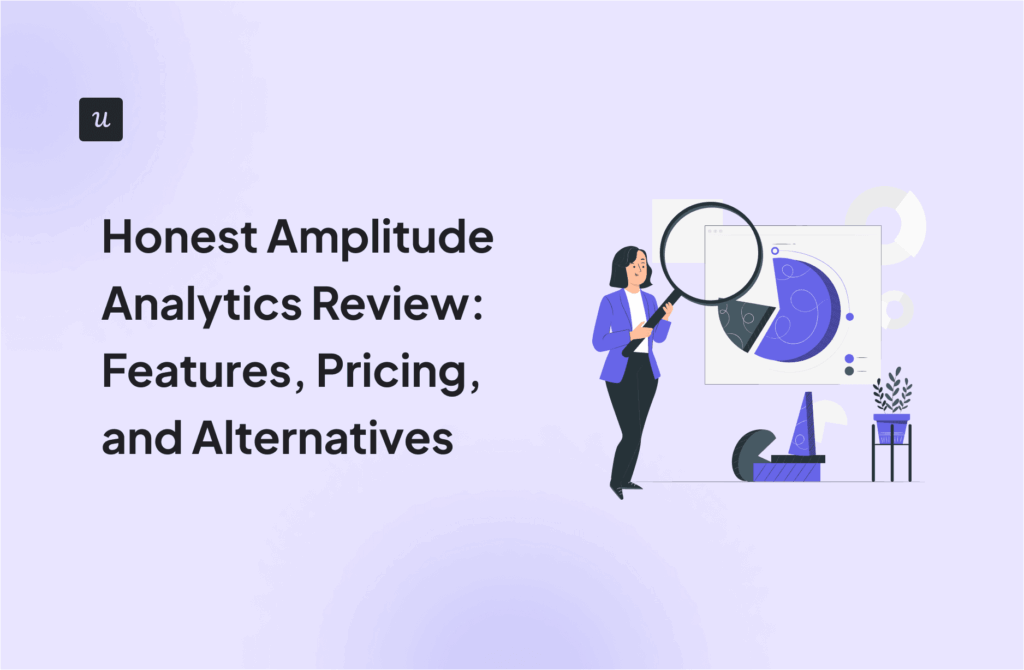
Understanding how to choose CDP vendors that help you harness data, make the most of the insights you gather, and drive growth is a tricky challenge.
In this article, we’re going to unpack what a customer data platform (CDP) is, explore the best tools out there, and share a few attractive alternatives.
Let’s get into it!
Get The Insights!
The fastest way to learn about Product Growth, Management & Trends.
What is a customer data platform (CDP)?
A customer data platform is a tool enabling you to collect, analyze, and understand customer behavior and use those insights to drive customer success.
Rather than being single-purpose tools, typically CDPs will give you a whole host of functionalities, like:
- Collecting data from multiple sources
- Tracking in-app behavior
- Databasing and integrations
Let’s explore some essential features in the below section.
Must-have elements in customer data platforms
Although each CDP solution will be subtly different, any savvy SaaS owner or product manager should be looking for a few ‘must have’ features.
Here are a few to consider:
- Customer data unification and data management. A CDP is useless without a valuable supply of customer data. Your tool should gather and combine both online and offline data, and then effectively unify it to give one cohesive view.
- Audience segmentation. You shouldn’t treat your customers as one homogenous group. You’ll have different segments with vastly different needs. You need to distinguish between those user groups to effectively tailor the experience (i.e., launch personalized marketing campaigns).
- Advanced analytics. This will help you unpack the ‘why’ behind customer behavior, monitor important metrics and progress toward KPIs, and most importantly, make data-driven decisions rather than rely on guesswork.
- Real-time updates. You want to be able to process, update and make sense of customer data (and customer behavior) in real time. Why? The sooner you can take action, the more effectively you’ll be able to solve problems.
- Multiple integrations. Modern tech infrastructure enables integrations for a reason. You can leverage the huge variety of third-party apps out there, rather than building functionality from scratch.
- Data governance. The legislation around customer data is complex and dynamic. A good CDP will have built-in data governance and security measures to help you protect customer data, including access controls and field-level encryption.
How to select a CDP for your business?
The CDP market is a busy, complex place – and that makes it tricky to choose the right platform. Here are a few key steps to help you make the right decision.
1. Involve internal stakeholders to choose the right CDP
“The best way to minimize disagreement is to make sure that all the stakeholders are in the room.”
– Cheryl Yeoh
Involving stakeholders in your decision can be of enormous help. You’ll be able to properly identify the set of requirements from across the entire organization – not just reflecting the bias of one team.
Who might you involve?
- Product teams. The people actually building the product will have a deep insight: how does a CDP slot into the existing development process?
- Customer success teams. Representing the voice of the end user, and highlighting use cases your choice of CDP might be able to help with.
- Marketing teams. Many CDPs also encompass advertising tools – your marketing and comms teams will have the best understanding of what they need to do their jobs.
- Sales teams. You’ll be nowhere if you don’t convince people to sign up. Salespeople will have interesting ideas about how they can leverage a CDP to boost revenue.
2. Define business goals and use cases for choosing a CDP
Without a goal, you can’t score.
So before leaping into a decision, start by brainstorming all the potential use cases for your CDP. Cast the net wide, and remember, you can always refine it as you go. You’ll be able to sift these into distinct use cases and define a clear set of business objectives you’d like to achieve.
This effectively becomes your ‘shopping list’ for choosing a CDP: you can compare vendors’ offerings to your set of requirements.
3. List down your tech stack to be integrated with a CDP vendor
Of course, you can’t just think about your wish list. You need to understand your current infrastructure: what are your technical constraints? That’ll have a huge impact on your choice of tool.
For example, if you’re currently using Google Analytics to understand user behavior or HubSpot for marketing – you don’t want to throw all that hard work and data in the trash.
Ease of integration, the ability to share third-party data, and configurability should all influence your decision.
4. Decide on critical CDP software features
Now, it’s time to think about priorities.
What features classify as a must-have – things you can’t function without – and which are simply nice to have? This is where vendor evaluation gets serious.
Of course, there isn’t a one size fits all list. It will depend on your specific business context (i.e., the volume of monthly active users, the industry you operate in, the core capabilities of your product, etc.).
5. Compare customer data platform vendors and select the best one
Finally, we’ve reached crunch time.
You’ve thoroughly understood the problems you’re trying to solve, you’ve mapped out your constraints and the technical landscape, and identified which features matter the most to you.
Hopefully, that should make comparing CDP vendors far simpler: it’s just a case of picking the tool that fits your criteria the best! Easy as pie.
The best customer data platform of 2023
Next up, we’re going to dive into a few of the best customer data platforms currently available on the market, their features, and how much they cost.
Segment
Segment will help you collect, clean, and control your customer data. Some of its functionality includes:
- Unified view of the customer journey.
- Flexible API enabling developers to connect sources of customer data, such as web or mobile apps with analytics tools.
- Easily integrate first-party data with other tools.
- Break down siloes and build personalized experiences.

Segment offers three primary plans:
- Free. Basic package that supports up to 1,000 visitors a month.
- Team. Up to 10,000 visitors and unlimited API access. This costs $120 a month.
- Business. Supports over 10,000 visitors, alongside a whole host of other features (i.e., data governance, enhanced personalization, etc.). This tier has custom pricing.
Lytics
A CDP built for customer-centric experiences, Lytics is the first CDP with native AI built-in. With Lytics you can;
- Leverage 100+ integrations (including data warehouses, customer services tools, communication platforms, and more).
- Host in your Google Cloud for top-class privacy, security, and GDPR compliance.
- Map, combine, and harvest insights from data to improve the customer experience fast.

Lytics pricing is not available on its website and to get a quote, you need to contact their team.
Bloomreach
A powerful e-commerce as well as a customer data platform, Bloomreach focuses on personalization. With Bloomreach you can;
- Combine consumer and product data to bring personalization to life.
- Create personalized experiences and tweak the customer journey to help your users achieve their goals.
- Focus on maximizing revenue with e-commerce integrations.

Similar to Lytics, Bloomreach pricing is not openly available. You need to contact their sales team for a quote and they’ll suggest a pricing plan for your business needs.
Alternatives to customer data platform
A final thought: CDP solutions aren’t your only option when it comes to handling customer data.
A CDP is about managing and understanding insights from user data. But just understanding it isn’t enough: to make a difference, you need to act on what you’ve learned.
Speed is of the utmost importance, too. If a specific event happens in-app, you want to be equipped to respond (i.e., with appropriate in-app messages) as quickly as possible.
Let’s take a look at a few alternative tools.
Product growth platform – Userpilot
Userpilot is a powerful, comprehensive platform designed to help you transform the customer experience and focus on customer growth for both web and mobile apps.
You can Userpilot for the following purposes;
- Collect customer data directly from your users with custom surveys. You can also integrate Userpilot with tools like HubSpot to collate customer data in a single place.

- Understand user behavior with in-app analytics.

- Trigger in-app messages to boost engagement.

Pricing depends on user volumes, but there are also three tiers to consider. Starter is the entry-level plan starting at $299 a month(paid annually) for up to 2000 monthly active users. Growth, the most popular plan, costs $799 a month (paid annually). Enterprise has custom pricing.
Customer relationship management software – HubSpot
A CRM is an all-in-one tool to manage relationships with your customers end to end. The one from HubSpot is a comprehensive platform offering everything from inbound marketing, sales, support, and more – alongside dozens of useful integrations.

HubSpot offers a basic Free plan, a Starter plan for $30 a month, a Professional plan for $1,600 a month, and an Enterprise plan for $5,000 a month.
Data warehouse – Microsoft Azure
Data warehouses are large repositories consolidating data from multiple channels. Microsoft Azure is one of the best options on the marketplace, combining dozens of different cloud computing services to offer a seamless way to manage customer data – and make data-led decisions.
As you’d expect, you have top levels of security, scalability, and best-in-class performance.

The price of Microsoft Azure is available on request. It also offers a flexible pricing plan (pay as you go) and a pricing calculator.
Conclusion
You should now have a solid understanding of what a customer data platform is, the different options out there, how to choose the right CDP for your organization, and whether you should consider alternatives.
Want to understand customer data and build product experiences code-free? Book a demo call with our team and get started! Check out the banner below for more information.






